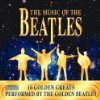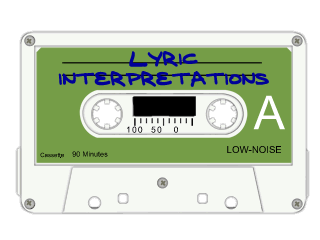Beatles - A Day In The Life Meaning

Song Released: 1967
A Day In The Life Lyrics
About a lucky man who made the grade
And though the news was rather sad
Well I just had to laugh
I saw the photograph
He blew his mind out in a car
He didn’t notice that the lights had changed
A crowd of...
-
Anonymous said:
"Some of the interpretations of this song are way off base. This song is actually comprised of two songs that John and Paul put together. John constantly read newspapers about world events and was often fascinated by them. When he says, "I read the news today, oh boy," he means it quite literally.
The first verse is about the newspaper story about the guiness heir's (lucky man who made the grade) fatal car accident. He ran an intersection and was killed. At the scene, the passersby thought they recognized him as someone famous.
The second verse is literally about a movie that John had saw. The movie was a flop, but John found it interesting because he had read the book. The last line in the second verse is a throwaway line, and true to john's love to put sexual innuendo in his songs, it is simple and suggestive.
Originally, the song had 24 bars of dead time that John didn't know what to do with. It started with an alarm clock that had went off in the studio (by accident) and was left on the four track tapes. Paul was working on a simple song about a typical hectic day in a working joe's life. He sings the third verse about this uneventful morning.
The final verse was about another newspaper story John had read. The english government had spent a fortune counting potholes in the streets of blackburn lancashire. He thought it was absurd to spend the money that way instead of fixing the streets.
It really is that simple. The crescendo's of the orchestra were paul's idea to give the song drama. The final notes were made by bringing a bunch of grand pianos in the studio and having all of the beatles, george martin and geoff emerick pound the chord and then turn the recording volume up gradually to make the chord last as long as possible."
and he was close, but off on a few things.
The second verse is about "How I Won The War", a movie John
had made with "A Hard Day's Night" director, Richard Lester.
He hadn't read the book, he had been in the movie, but, you know, songs tend to rhyme.
The twenty four bars of dead time do not start with the sound of an alarm clock, they end with it. It WAS accidentally set off when Mal Evans was counting out the bars. That's his voice you can hear in the background during the initial "swell." He is counting to twenty four.
Also, it was Mal who was involved in the simultaneous piano chord, not Geoff Emerick, who was the recording engineer and in the booth at the time. Additionally, it was not all
grand pianos, but whatever pianos they could find in Abbey
Road at the time.
The line "I'd love to turn you on", was not a throwaway
sexual innuendo. Both John & Paul said in several post-Beatles interviews that it was a deliberate drug reference. -
Anybody know what the end is supposed to say? It sounds like a bunch of jibberish but I don't think it is. What does it mean?
-
This may sound silly but it sounds reasonable to me. Did anybody ever think about going back and figuring out where and when John wrote this song and look at the newspaper from that day and see if the articles match the lyrics of the song? Maybe this will answer questions about the "Paul is dead hoax" and clear up what is still foggy in people's minds.
-
It's about articles in the paper. a lot of their songs are inspired from articles, or things in their life. Not every song is a puzzle piece to some crazy drug life they lived. They didn't even smoke pot until the amazing Bob Dylan smoked them out in 64. but this is cool, there is a long chord at the end of the song that's like 40 seconds long that's silent and only intended for Paul's dog to hear. Haha
-
The song is about Paul McCartney cutey. And how William Campbell became Paul..
-
Quit saying that this is a John Lennon song. Stop saying that this is a McCartney song. It is a true Lennon McCartney collaboration. John wrote the "soft" part at the beginning and end. McCartney wrote the orchestra arrangement and the middle part. It was George Martin that came up with the last E chord.
-
Not an interpretation but if you reverse the last part of the song right after the high pitched noise they repeat "we're f*cking anti superman"
-
Seems to me it's the sandwiching of the two negatives; the literal and figurative laid out by the most eloquent interpreters. Seems painfully obvious, but then I've had my share of all that in question.
-
This interpretation has been marked as poor. view anyway
-
The Beatles had an underlying theme running through several of their albums - Paul is dead. This shows up in the Sgt Pepper album where Paul is the only Beatle facing away (as if saying he's dead) on one side and with a hand over his head on the other (a sign of death in England), Abbey Road he's the 3rd person on the cover following John (dressed as a preacher) and George Harrison at the back dressed as the grave digger. Paul is barefoot (people are buried without shoes in England) and he's holding a cig in his right hand (he's left handed). There are many other examples of this throughout their work. John and Paul were playing a game with this. In "A Day in the Life" the line about "now they know how many holes it takes to fill the Albert Hall" was in reference to the Beatles being snubbed by many of the English "nobility". John was referring to the 4,000 A$$ holes in Albert Hall. It was a double entendre referring to both.
-
This interpretation has been marked as poor. view anyway
-
This interpretation has been marked as poor. view anyway
-
The part about 'He blew his mind out in a car' was thought, in large sections of the Midwest US, to refer to the death of Paul in a car wreck. Russ Gibb, a DJ at WKNR-FM, in Detroit, first spoke of it shortly after the album came out; he heard it on his Sunday night call-in show from some college kids. They went on about it for hours, and the rumor spread like wildfire, so that to this day, Gibb refers to it as the night he killed Paul. While I've heard the story about the Guinness heir, that wasn't until much later. It seems the Beatles heard about it and started putting references about it in their subsequent work...
For example, the cover of Abbey Road...
rustedchrome.com is a website about the Detroit music scene in the '60's, and there are others that may also have covered this story in more depth...
More Beatles songs »
Trending:
Just Posted
| Always | anonymous |
| Another Way To Die | anonymous |
| Please Forgive Me | anonymous |
Weekly Most Popular
| 1 | Beatles |
|---|---|
| 2 | Taylor Swift |
| 3 | Eminem |
| 4 | Drake |
| 5 | Flogging Molly |
| 6 | Juice Newton |
| 7 | Glee Cast |
| 8 | Blink-182 |
| 9 | Post Malone |
| 10 | Newsboys |

